SWIR/NIR-II Imaging
Near-infrared (NIR) and shortwave infrared (SWIR) fluorescence is rapidly being used within medical and biological research as wavelengths in the NIR can penetrate soft tissue producing high resolution images of in vivo structures.
The second NIR window (NIR-II, 900 – 1700 nm) is of special interest as it is able to penetrate deeper into soft tissue with reduced scattering and less autofluorescence. This window also takes advantage of the water transparency window, a wavelength range in which water absorption is negligible (800 – 1400 nm).
NIR-II imaging relies on NIR-II emitting fluorophores, which are undetected by traditional silicon based sensors. The band gap within silicon sensors means there is a minimum amount of energy required to absorb a photon. The energy of NIR-II photons (or any above 1100 nm) is too low to produce this energy. Therefore InGaAs sensors are required.
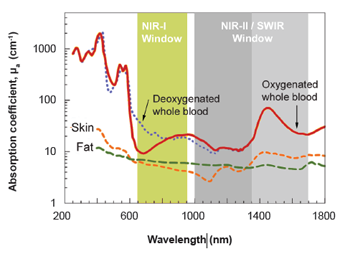
Application Notes
NIR-II Probes for In vivo Imaging
Optical fluorescence imaging is one of the most common techniques for imaging in vivo, due to its high temporal and spatial resolution [1]. As it is a non-invasive, real-time technique it is an attractive imaging modality for medical applications such as cancer diagnostics, biosensing, and medical testing.
The majority of fluorescence probes, essential for optical fluorescence imaging, reside within the visible range (400-700 nm). However, visible light is limited when imaging within the body…Read Full Article
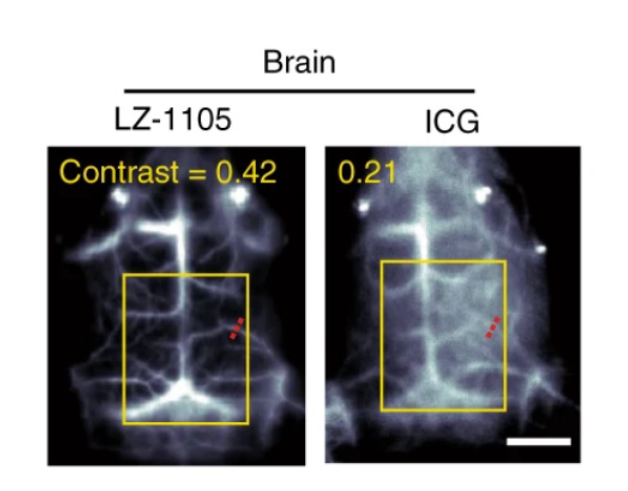
Spinning Disc Confocal Microscopy In The NIR-II Window

Near-infrared (NIR) fluorescence is a technique used widely within biological and medical research due to the fact that NIR light can penetrate deeply in biological specimens. It offers high spatiotemporal resolution alongside the capability to image quickly (Fan 2019). The second NIR window (NIR-II, 900 – 1700 nm) is of recent interest due to its superior penetration depth, reduced tissue absorption and…Read Full Article
In vivo Fluorescence Imaging in the NIR-I Spectral Region for Early Cancer Detection
UV, VIS, and NIR-I detection methods have been used in various scientific and medical applications for decades. Each of these approaches, however, has its limitations. For instance, light at UV and visible wavelengths is quite easily detectable using silicon-based CCD technologies but is unable to penetrate samples due to reflection and scattering.
New CCD cameras can detect NIR-I wavelengths from 750 nm up to almost 1100 nm and thus provide…Read Full Article

Deep-Cooled InGaAs FPA Camera Enables High-Speed, High-Resolution In vivo Imaging of SWIR-Emitting Quantum Dots
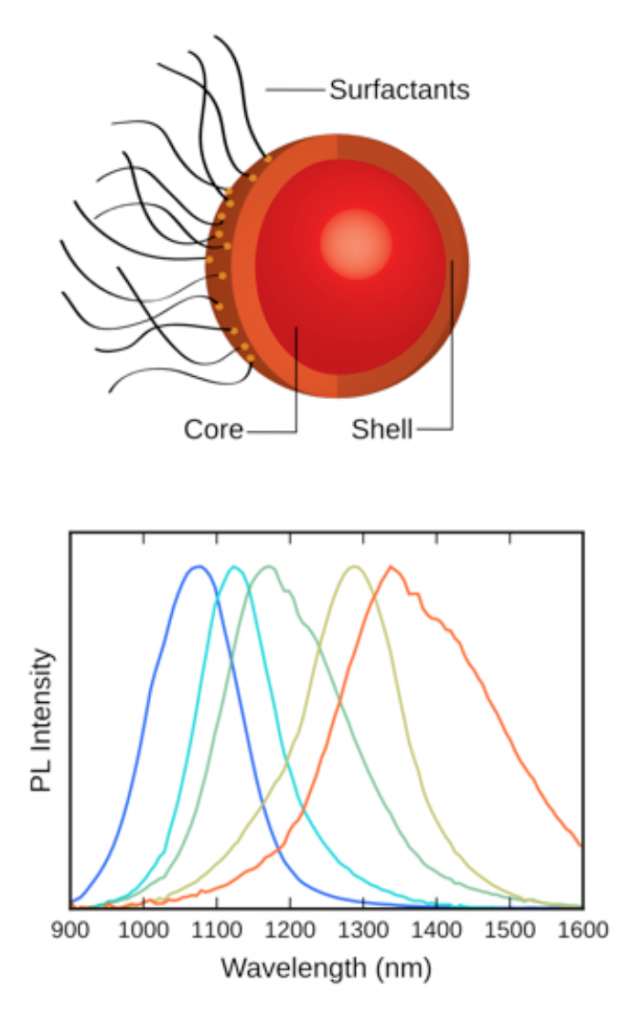
Working in the shortwave-infrared (SWIR) region of the spectrum affords researchers several advantages, including the abilities to circumvent unwanted fluorescence backgrounds and to probe more deeply into sample surfaces. The advent of deep-cooled camera systems that employ indium gallium arsenide (InGaAs) focal plane arrays (FPAs) has further increased…Read Full Article
Scientific NIR-II-SWIR Cameras Enable Femtosecond Frequency Comb Vernier Spectroscopy
A frequency comb is a spectrum that comprises a series of discrete, equally spaced elements. The most popular mechanism used to generate a frequency comb is stabilization of the pulse train by a mode-locked laser. In 2005, John L. Hall and Theodor W. Hänsch shared one half of the Nobel Prize in Physics for their contributions to this important area. Recently developed techniques…Read Full Article
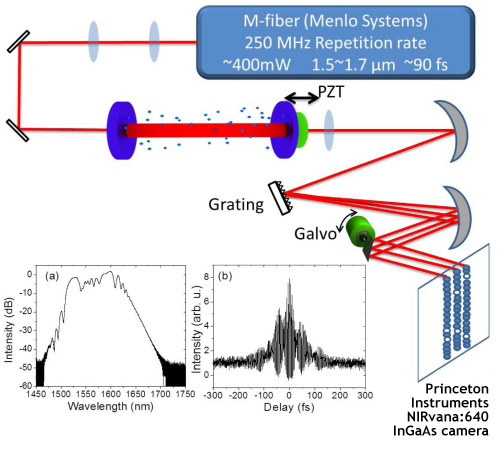
Scientific NIR-II-SWIR Cameras for Advanced Imaging and Spectroscopy Applications
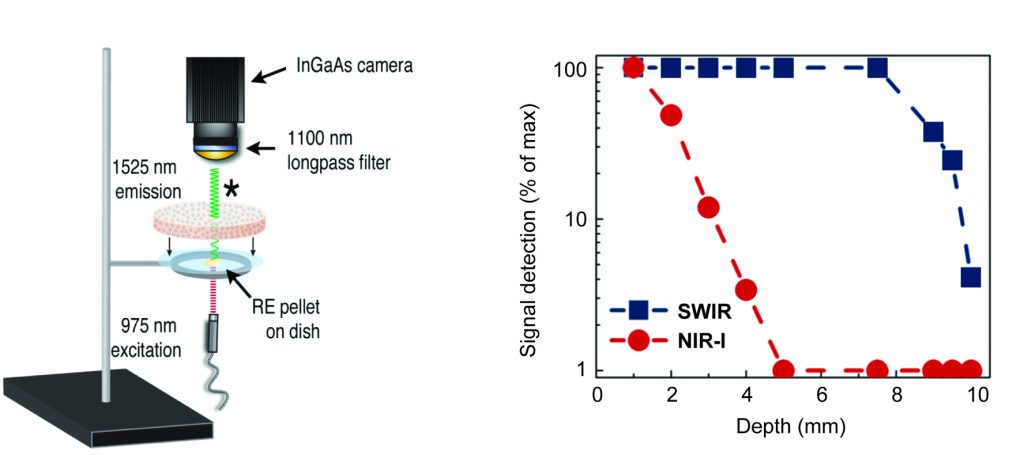
For decades, x-ray and UV-vis-NIR detection methods have been used in various scientific, military, medical, and industrial applications. Although generally employed with success, these detection systems nonetheless still possess some limitations when utilized for such types of work.
Effectively leveraging the good sample penetration afforded by x-rays, for example, can prove difficult for…Read Full Article
Technical Notes
Introduction to Scientific InGaAs FPA Cameras
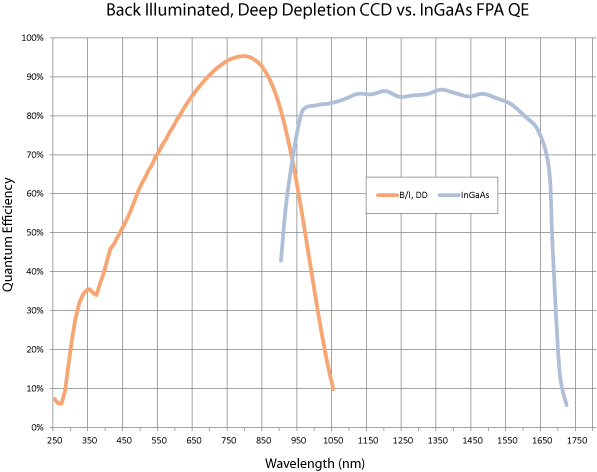
Working in the near infrared (NIR) and shortwave infrared (SWIR) regions of the spectrum offers researchers several advantages, such as the abilities to circumvent unwanted fluorescence backgrounds and to probe more deeply into sample surfaces. Imaging and spectroscopy techniques performed in the NIR/SWIR are playing an increasingly important role…Read Full Article
